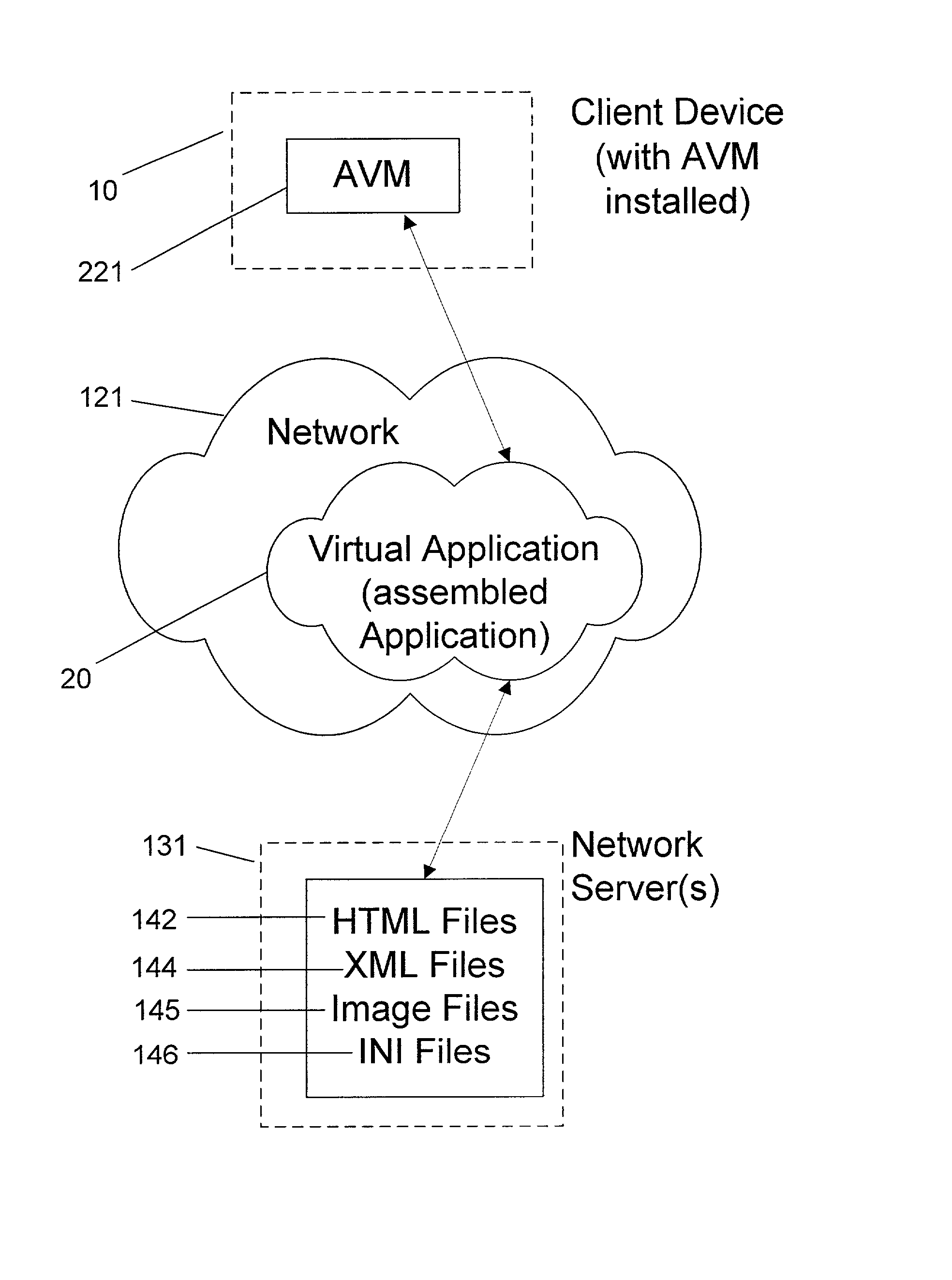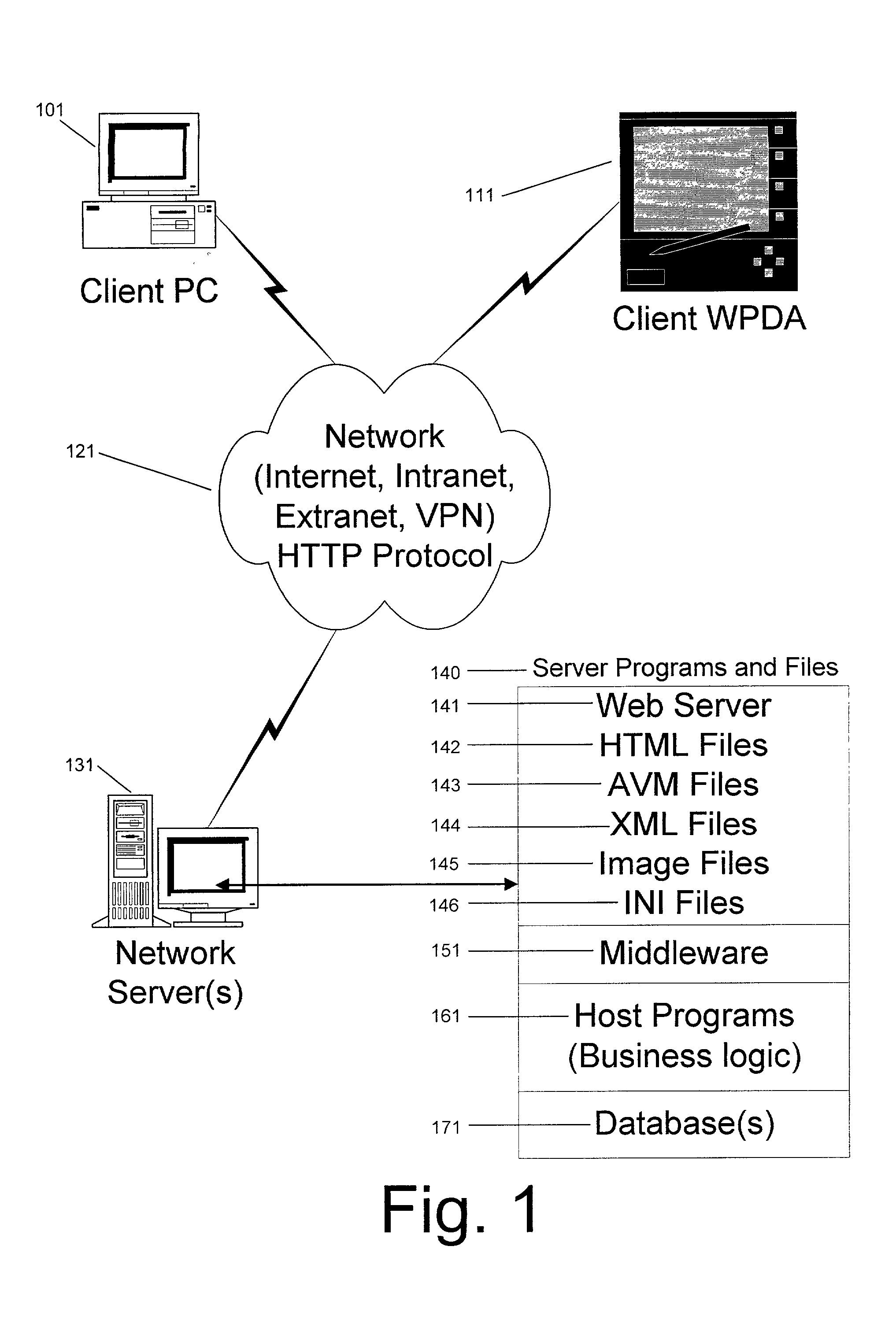System and method for deploying and implementing software applications over a distributed network
a distributed network and software application technology, applied in the field of software application deployment and implementation, can solve the problems of increasing overall network traffic, reducing both performance and speed, and the -to-consumer paradigm typically does not offer the functionality required for business-to-business or business-to-employee applications
- Summary
- Abstract
- Description
- Claims
- Application Information
AI Technical Summary
Benefits of technology
Problems solved by technology
Method used
Image
Examples
Embodiment Construction
[0025] A software solution of the present invention includes an Application Virtual Machine (AVM) that is deployed by a server over a network to client devices, which are typically remote from the server. The AVM is installed with a starter plugin and run locally on the client computer. The AVM then accesses server resources, such as XML files, data, and the like, on the server over the network.
[0026] For the purpose of this discussion, the term "network" generally refers to any type of data communication network, whether wired or wireless. In the preferred embodiment, the term "network" includes the Internet. The Internet is a commonly used abbreviation for "Internetwork" and is used to refer to the collection of networks and gateways that utilize the Transmission Control Protocol / Internet Protocol (TCP / IP) suite of protocols, which are well-known in the art.
[0027] The term "client" refers to a computing device (such as a personal computer, a workstation, or a hand-held device), wh...
PUM
 Login to View More
Login to View More Abstract
Description
Claims
Application Information
 Login to View More
Login to View More - R&D
- Intellectual Property
- Life Sciences
- Materials
- Tech Scout
- Unparalleled Data Quality
- Higher Quality Content
- 60% Fewer Hallucinations
Browse by: Latest US Patents, China's latest patents, Technical Efficacy Thesaurus, Application Domain, Technology Topic, Popular Technical Reports.
© 2025 PatSnap. All rights reserved.Legal|Privacy policy|Modern Slavery Act Transparency Statement|Sitemap|About US| Contact US: help@patsnap.com



